Sandy ridges pose a mystery for future Martian beach vacations
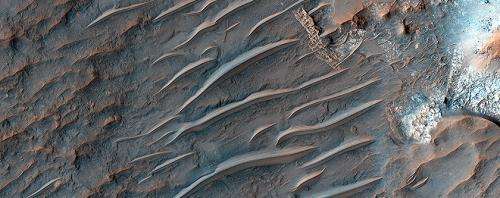
What are these thick dune-like features on Mars, and how were they formed? Scientists are still trying to puzzle out these ridges, which you can see above in a more tropical region of the Red Planet called Iapygia, which is south of Syrtis Major. The thick ridges were captured from orbit by the Mars Reconnaissance Orbiter's High Resolution Imaging Science Experiment (HiRISE), and we've included some more intriguing pictures below the jump.
"Called transverse aeolian ridges, or TARs, the features stand up to 6 meters tall and are spaced a few tens of meters apart. They are typically oriented transverse to modern day wind directions, and often found in channels and crater interiors," read an update on the University of Arizona's HiRISE blog.
"The physical process that produces these features is still mysterious. Most TARs display no evidence of internal structure, so it is difficult to discern exactly how they were formed."
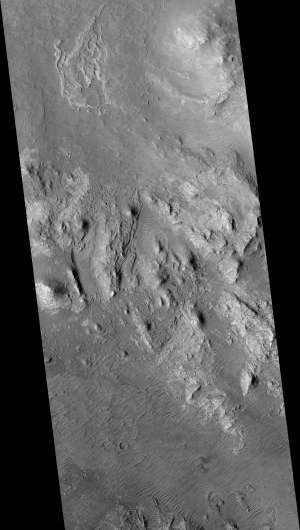
This picture from the NASA spacecraft was taken in Iapygia, which is south of Syrtis Major. While scientists say these look similar to TARs in other parts of the Red Planet, the features have layers on the northwest faces and a paucity on the southern side.
Scientists suggest it's because these TARs may have had wedge-shaped layers, which hints that they would have gotten taller as material was added to the ridges. They hope to do further studies to learn more about how TARs formed in other regions on Mars.
We've included other recent releases from the HiRISE catalog below, so enjoy the Martian vistas!
-
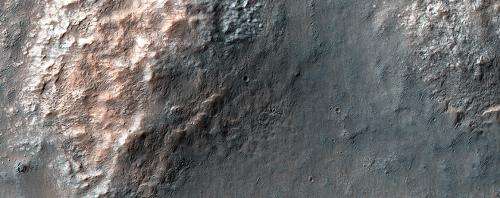
An image of Eridania Basin, a southern region of Mars that once could been a lake or inland sea. Picture taken by the High Resolution Imaging Science Experiment (HiRISE) on the Mars Reconnaissance Orbiter. Credit: NASA/JPL/University of Arizona -
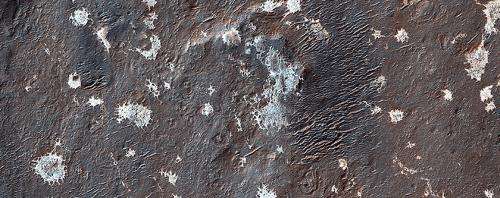
Scientists are still puzzling out the nature and formation of these light-toned deposits in the old Vinogradov Crater on Mars. Picture taken by the High Resolution Imaging Science Experiment (HiRISE) on the Mars Reconnaissance Orbiter. Credit: NASA/JPL/University of Arizona -
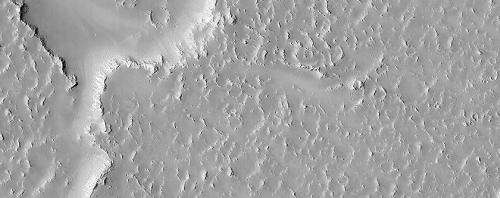
Older lava flows in Daedalia Planum on Mars. Picture taken by the High Resolution Imaging Science Experiment (HiRISE) on the Mars Reconnaissance Orbiter. Credit: NASA/JPL/University of Arizona
Source: Universe Today





















